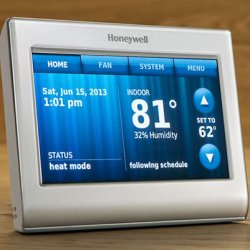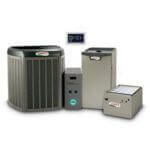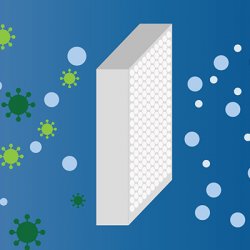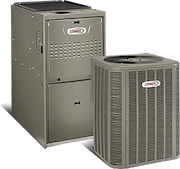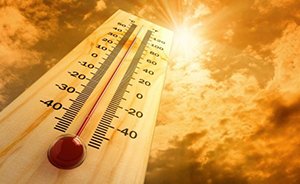
When the first warm day of the year arrives in St. Louis, the last thing you want is for your AC system to fail when you turn it on. That runs the risk of spending a few days in discomfort waiting for a technician to come fix it for an exorbitant sum of money.
When an AC system sits dormant during the cooler months collecting debris and plant matter, some maintenance is required to get it functioning properly before summer. Plan ahead of the warm St. Louis summers and get your AC system up and running with some simple maintenance tips.
If you do require professional service in the St. Louis area, reach out to our heating & air conditioning experts by calling 314-993-1110 or by using our convenient online contact form.
AC System Maintenance Safety
Prior to beginning work on your central AC system, make certain to turn off power to the condenser at the service panel and the weatherproof disconnect box.
(Caution: The condenser has a capacitor that stores an electrical charge, which can be dangerous, so wait 30 minutes for the charge to deplete. For increased safety, do not touch any of the electrical components. There is also a separate switch or circuit breaker in the main electrical panel of the furnace or air handler cabinet, which needs to be turned off as well.)
AC System Maintenance Tips
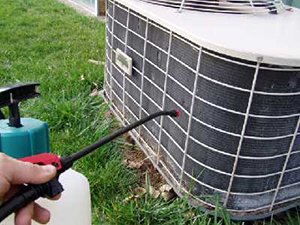
1. Clean or Replace the Filters
The most important maintenance task for your AC system is also the easiest. Replace or clean the furnace or air-handler filters every 6 months or whenever they become clogged with dust. Replacing the filters removes the risk of clogged filters restricting airflow and reducing efficiency.
2. Clean the AC System Condenser Coils
The condenser unit is the large metal fan in the big box outside of your home. Ideally, it is protected by a cover or tarp when unused. Whether covered or not, it will collect plant matter and dirt over time, which will need to be cleaned. Any debris that gets inside will likely clog the coils and will obstruct the airflow, lessening the AC system’s efficiency.
To start cleaning the coils, ensure the power to the AC system is shut off. Remove the protective grilles or side and top panels with either a screwdriver or nut driver. Be aware that the top part may be heavy due to the fan being attached, and do not pull on any wires that may be attached to the fan.
Take a refrigerator coil brush or a soft vacuum brush and gently brush off the debris from the outer coils using caution not to bend the fins. If you accidentally bend the fins, there is a specialty fin comb you can use to straighten them out again. After the outer part of the AC system is clean, take the vacuum to the inside part of the coils.
If debris is still stuck, you can use a commercial coil cleaner on the inside but avoid spraying the fan or electrical components. Another possibility is to take a hose with a narrow nozzle and use care to not bend fins, flood the unit, or get water on the electrical parts or fan motor. You can cover these with a plastic garbage bag for protection. Keep in mind that it can cause mud to coagulate between fins, so be thorough and clean well.
3. Remove Debris in the Air Conditioner System
Look for and remove any debris or plant matter inside the unit, and if there is a drain, make sure that is clear. Clean the blower’s fan blades with a rag and vacuum and tighten any loose bolts. You can use a little bit of WD-40 or lightweight oil in oil ports for lubrication. Wipe up any water and put the condenser back together.
Check around the AC system for weeds or plants growing and cut them back if they block airflow through the condenser.
4. Check Coolant Lines
There are refrigerant tubes that run from the condenser to the evaporator on the air handler. They are usually covered in coolant line insulation to maximize energy efficiency. If there are places where the insulation is frayed or missing, be sure to replace it by installing foam insulation sleeves or wrapping the tubes in a spiral with foam insulation tape.
5. Test the AC Unit
After your air conditioner has dried out completely, turn the power back on by first turning the thermostat inside your home to OFF. Then turn the power on at the disconnect box and the main panel, and switch the thermostat to COOL. If you notice any strange sounds or issues with the unit, contact a professional to schedule an air conditioner checkup.
For Additional AC System Help in St. Louis, Contact Us Today
If you have followed these maintenance steps for your AC System in St. Louis and it still does not run correctly or you would like help maintaining your HVAC system, call us today at 314-993-1110 to schedule an HVAC maintenance appointment.



